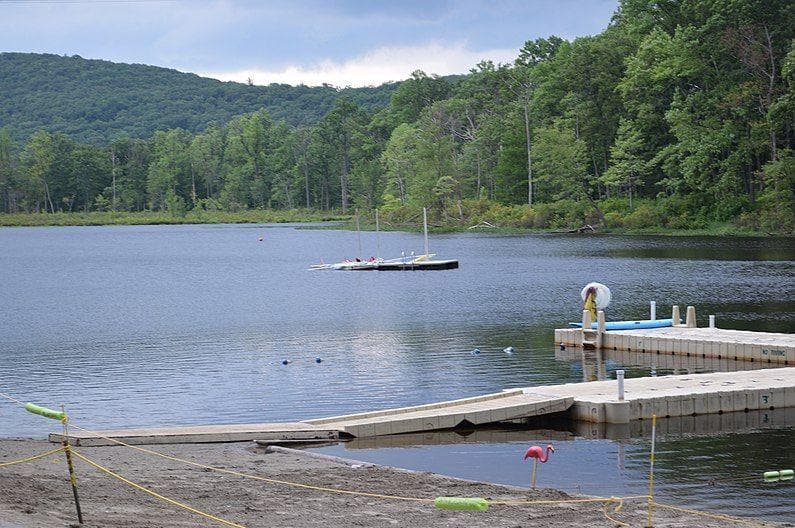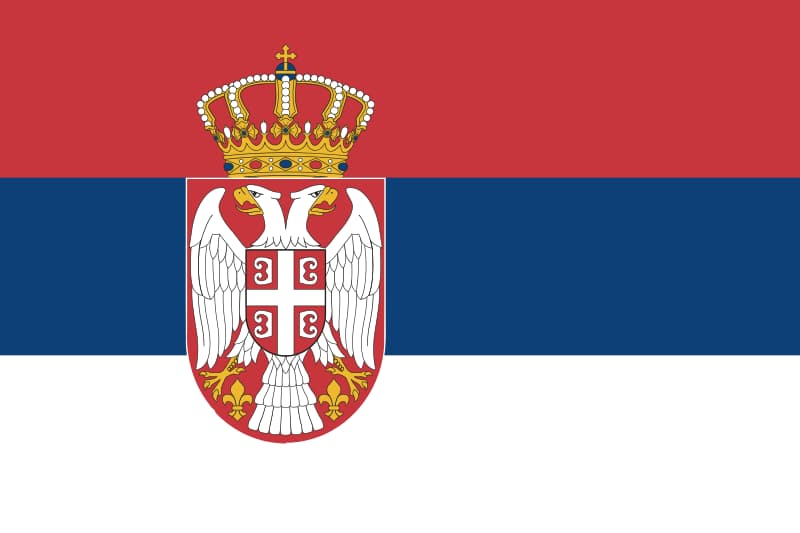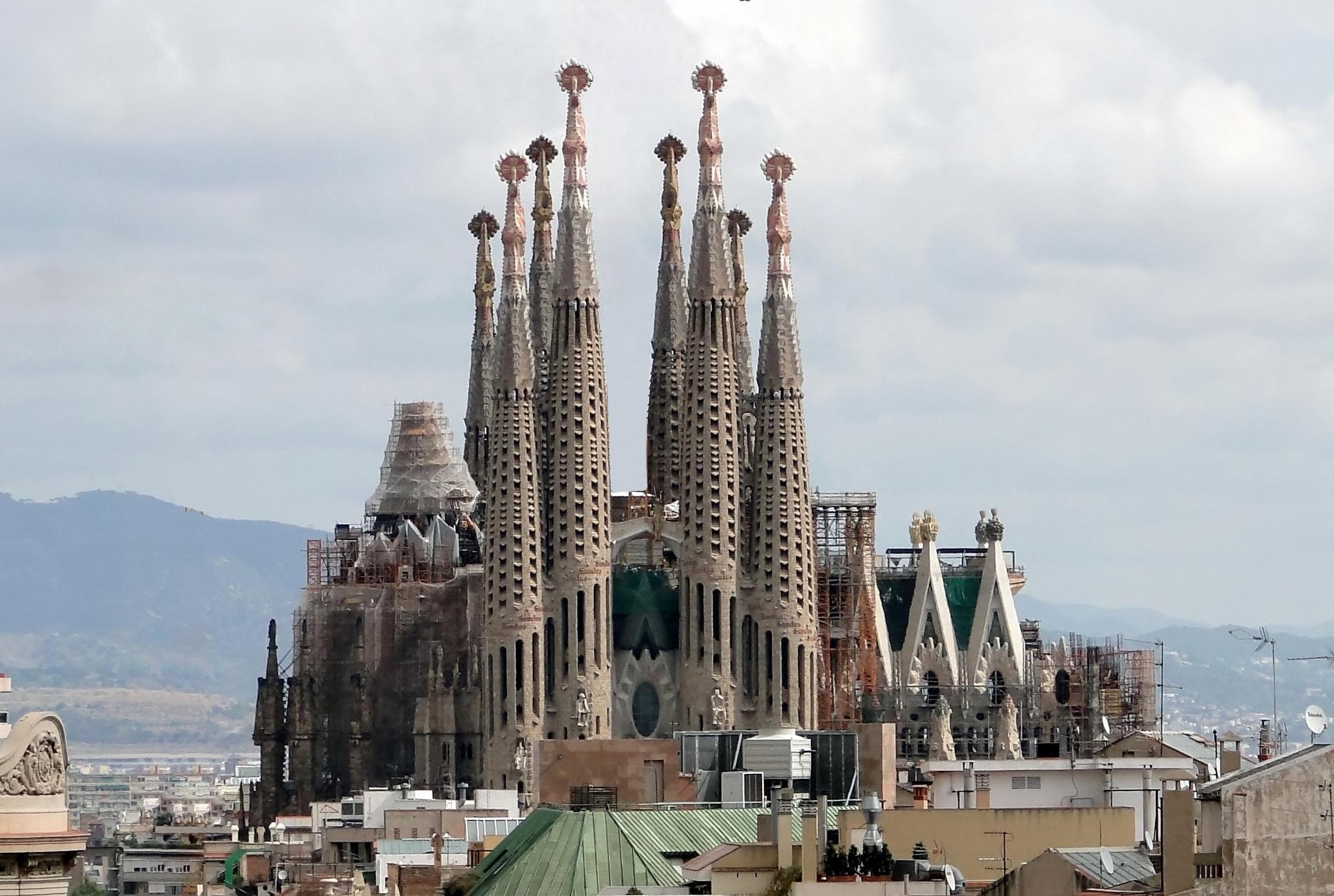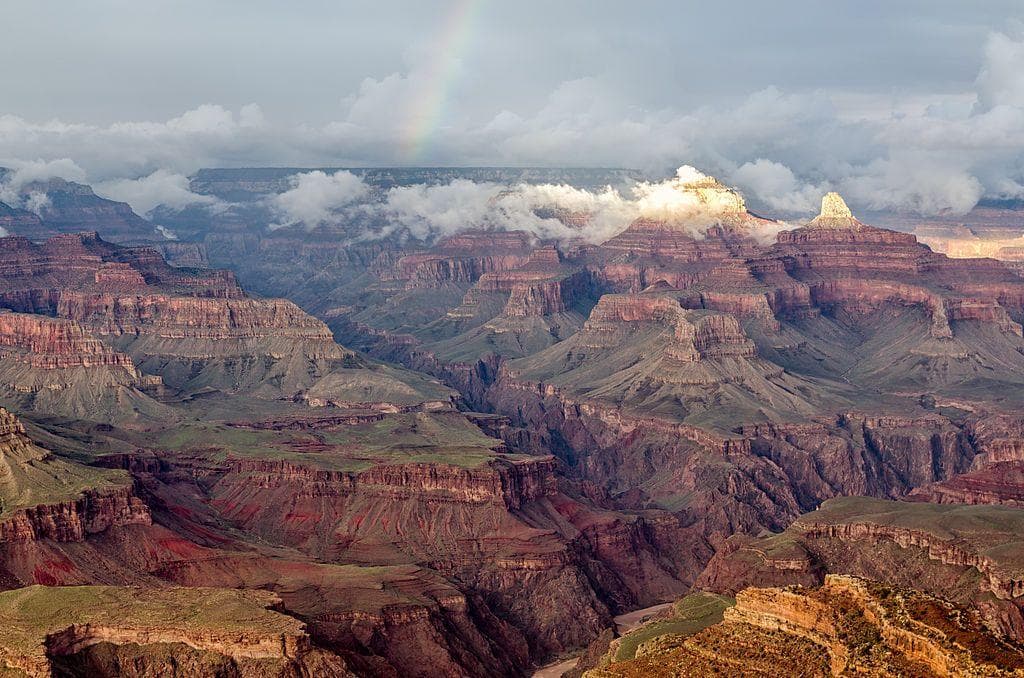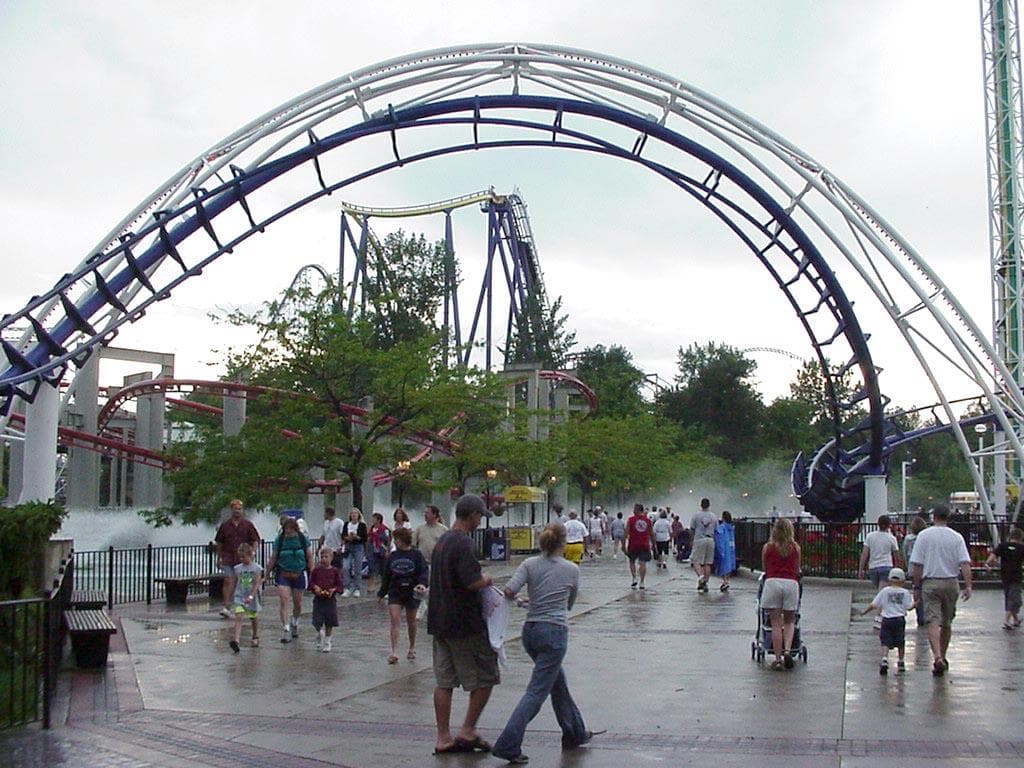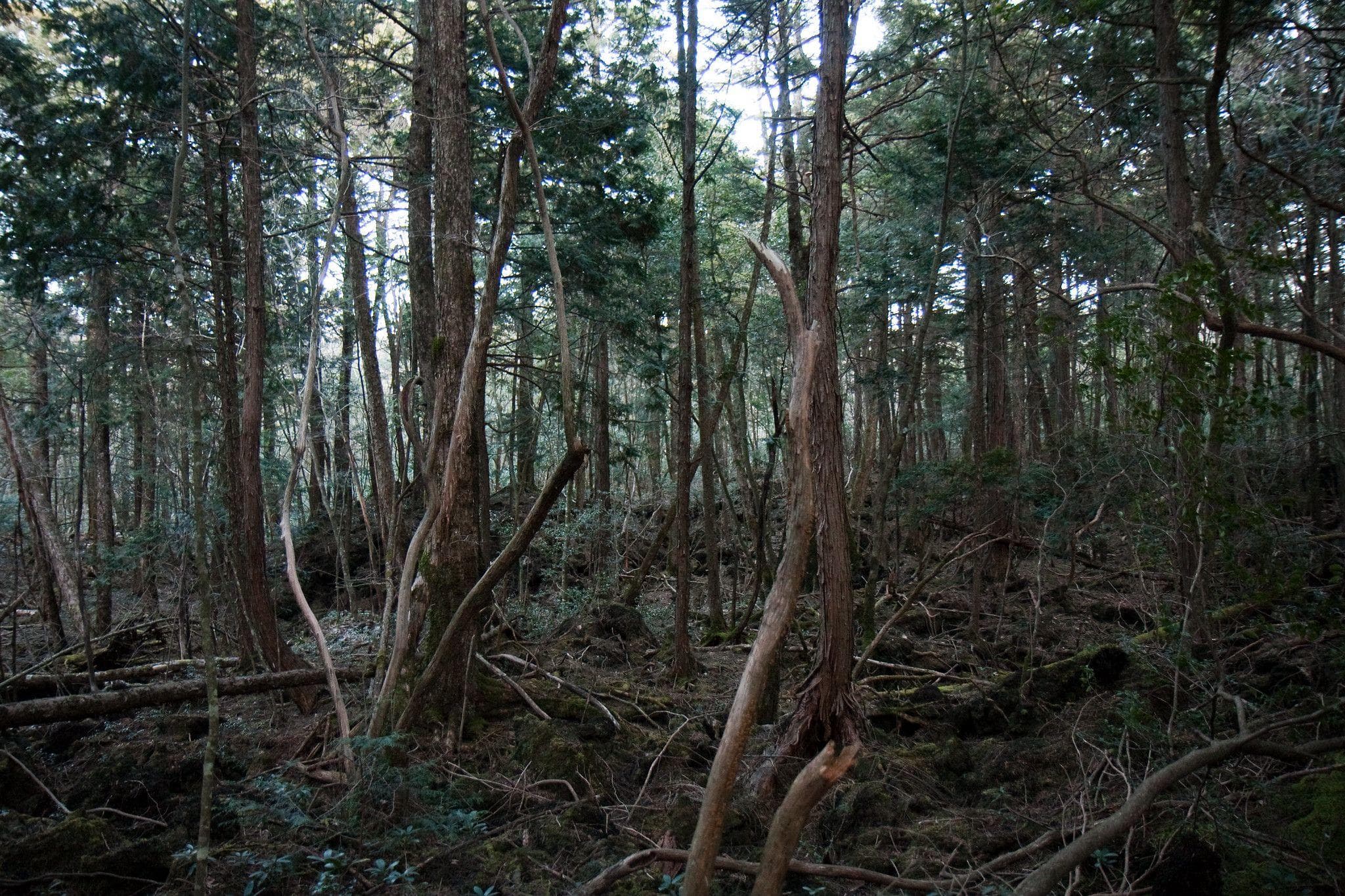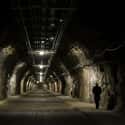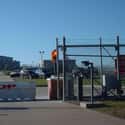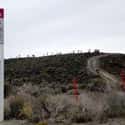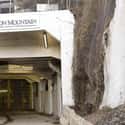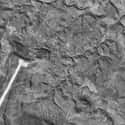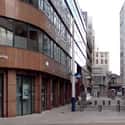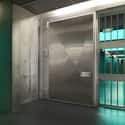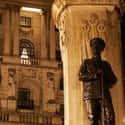-
(#1) Cheyenne Mountain Complex
Formerly the home of the North American Aerospace Defense Command (NORAD), the Cheyenne Mountain Complex in Colorado Springs, CO, is a military installation and bunker built to withstand and deflect a 30 megaton nuclear explosion. Currently the complex is an "alternate" command center for the Air Force with a crew of 200 or so maintaining it.
In the event of a nuclear war, the facility is perhaps the most secure place to be in the Western Hemisphere, with a 1.5 million gallon reservoir of fresh water, a massive reservoir for fuel, filters to keep biological or nuclear contaminants from getting inside, and more. Good luck getting in, citizen!
-
(#2) Svalbard Global Seed Vault
- Building
Strategically situated 800 miles from the North Pole on the Norwegian island of Svalbard is the Global Seed Vault, an imposing facility that houses more than 5,000 species of seeds (865,871 packets in January 2016) from around the world (including even plants native to North Korea). The vault is intended to be a back-up plan to re-seed the world in case of global devastation (think Waterworld, if you can stomach it).
How secure is it? Well, the facility itself is protected by an ice-covered steel door that requires only a simple key to enter, but getting to the remote Arctic island is a security measure in and of itself (not to mention scaling the mountain to get to the door). How safe is the treasure inside? The seeds themselves are strategically located so they would survive most missile blasts, earthquakes, or rising ocean water.
-
(#3) Fort Knox US Bullion Depository Kentucky
- Classical Revival
Everyone's heard of Fort Knox (lots of gold, Kentucky, impossible to break into it), but have you ever looked into just how locked-down that place really is? When it was built in 1936, the Treasury Department advertised "electric fences, a moat, steel-and-concrete walls, a bombproof roof, poison-gas booby traps, and an emergency flooding system."
Add to that newer technology such as video cameras and microphones, the dedicated armed guards, mine fields, razor wire and 30,000+ Army units stationed in and around the Fort and you have perhaps the most secure spot in the world to hold your gold.
-
(#4) Area 51
Like Fort Knox, Area 51 is legendary as a government-owned impenetrable space (just swap conspiracies about UFOs for gold bullion). But the specifics of Area 51's security - what the public knows about them, at least - are staggering: deadly force is authorized against trespassers, and those loitering at the perimeter of the top secret military base report having their cameras confiscated by security teams (even while on public land).
Air space above the base is restricted, and on the ground, buried motion sensors help keep unwanted visitors at bay. Whatever's happening at Area 51, it's safe to say that the government does not want the public to know about it.
-
(#5) Granite Mountain Records Vault
Built by the Church of Jesus Christ of Latter-day Saints in 1965, the Granite Mountain Records Vault is built 600 feet into a mountain in Little Cottonwood Canyon in Utah, just outside Salt Lake City. The public is not allowed inside, but the church says that they have nothing to hide: the vault just houses 3.5 billion (yes, billion) images and records important to the church (mainly for genealogical reasons).
How important are these documents? The vault was designed to withstand a nuclear blast.
-
(#6) Federal Reserve Bank Gold Vault
Here's what you're facing if you're the kind of cartoon super villain who wants to break into the New York City Federal Reserve Bank's gold vault: First, you have to deal with the building's security system and the armed Federal Reserve police force. Next up: steel-reinforced walls surround the vault, which is under 24-hour surveillance and protected by motion cameras.
Is that it? Not even close: a 90-ton steel cylinder, encased in a 140-ton steel-and-concrete frame and locked with four steel bars, protects the only entrance to the vault. Good luck!
-
(#7) Vatican Secret Archives
The Vatican's so-called "secret" documents, the Catholic Church is quick to explain, are actually just "private" documents, owned by the sitting Pope, dating back to the 8th Century. While well-guarded and secure, some of the documents can actually be accessed by qualifying scholars (just nothing after 1939). -
(#8) Smallpox Repositories
It makes sense that two of the most inaccessible facilities in the world house something people do not want to be exposed to for even a second: smallpox. Need a refresher on smallpox? The infected develop pustules on their body that split the skin open horizontally so your body resembles "a cobbled stone street." Your skin essentially falls off and then you die, except in some rare cases where you live but are forced to live your life as a walking scar.
Still, maintaining samples of the virus - which was otherwise eradicated in 1979 - is important in developing vaccines for it and studying how it works (after all, scientists are still unclear on how, exactly, it kills you). That's where the Centers for Disease Control in Atlanta, GA, and the State Research Institute of Virology and Biotechnology outside the city of Novosibirsk, Siberia, come into play. They are the only two places in the world known to house the smallpox virus.
The CDC's smallpox is so secure that no one, on the record, has ever even hinted at where exactly it is located or how it is stored. In Siberia, the United States government has helped secure the samples in a massive facility with huge concrete walls, high-tech fences, and motion detectors. Supervillians looking to engage in viral warfare would have a hell of a time getting to the virus, and then they would have to risk dispersing it without becoming infected themselves.
-
(#9) Iron Mountain Vault
About 100 miles north of Manhattan in Germantown, NY, sits the Iron Mountain Vault, the world's largest underground storage facility. It's a 95-acre facility with 220 separate vaults spread out over seven stories. How secure is it? The vaults are impervious to water and fire damage, among other natural disasters. Getting in requires making it through a 28-ton vault door that's triple time-locked.
State records, including birth and death certificates, are stored here (among other things), due to state statutes that require such documents be kept indefinitely.
-
(#10) Trementina Base
Believe it or not, Scientology founder L. Ron Hubbard's writings are (allegedly) inscribed on gold disks held in titanium caskets in an underground bunker known as the Trementina Base (because of the proximity to Trementina, NM). Accessible by private airstrip, the base is locked down tight and was built to withstand a nuclear blast.
Outside the bunker are massive symbols in the desert floor similar to crop circles. When the symbols were spotted by the media in 2005 (they are massive, after all) the church tried unsuccessfully to suppress the story. It turns out that the symbols are meant for either (1) Scientologists returning to Earth after fleeing a future Armageddon and looking for Hubbard's works, or (2) for the spirit of a young, reincarnated L. Ron Hubbard to use to find his way home.
-
(#11) ADX Florence Prison
Known as the "Alcatraz of the Rockies," the ADX Florence supermax prison in Florence, CO, is one of the most secure facilities on the planet. And it better be, considering who is inside: the most dangerous criminals in America - including Oklahoma City bomber Terry Nichols - as well as several foreign terrorists.
Twelve-foot tall fences covered with razor wire surround the facility, which is designed so prisoners don't know where they are in relation to the outside world (thus preventing any escape plans).
-
(#12) Antwerp Diamond Center
They say there's no cleaner restaurant than one that just re-opened after a health code violation shut them down. That's also likely true of a diamond vault after a $100 million heist: you can bet that the extra security measures put in place have made it one of the most secure places on the planet. That's the case with the Antwerp Diamond Center in Belgium.
After an expert diamond heist in 2003 - in which the perpetrators somehow got past infrared heat detectors, a seismic sensor, Doppler radar, a magnetic field, and a lock with 100 million possible combinations - the owners have likely learned their lesson.
-
(#13) Pionen Bunker
Whistleblower website Wikileaks relies on servers housed in a Cold War-era nuclear bunker in downtown Stockholm known as the Pionen Bunker. If you want to disrupt Wikileaks' efforts, you'll need to get through the half-meter thick metal doors first.
For extra protection, the bunker - owned by Swedish broadband provider Bahnhof - has backup generators recycled from old German submarines.
-
(#14) Singapore FreePort
One of the world's largest gold dealers stores its precious bullion at the Singapore FreePort, a high-security facility as big as six football fields with vault doors that weigh seven tons. Deutsche Bank stores $8.9 billion in gold at the "tax-free Fort Knox," alongside priceless works of art, jewels, and wine from around the world. -
(#15) The Bank of England's Gold Vault
Under the Bank of England's HQ in London sits 4,600 tons of gold protected by bombproof walls and accessible only through the use of comically large three-foot long keys. The keys won't work, however, on their own: the person using them has to use a voice-recognition password before the vault will open.
New Random Displays Display All By Ranking
About This Tool
With nearly 7 billion people living on the earth, it has become more difficult to find primitive places on the earth. However, if you want to have an unforgettable adventure, there are still relatively few places on earth that are worth visiting. From the ice fields of Antarctica to the jungles of Papua New Guinea, these are the most inaccessible locations on earth, there are also some places without residents due to ecological problems or other reasons.
Welcome to check the list of the most inaccessible places in the world, such as important military base Area 51, Cheyenne Mountain Complex, and more mysterious places.
Our data comes from Ranker, If you want to participate in the ranking of items displayed on this page, please click here.

